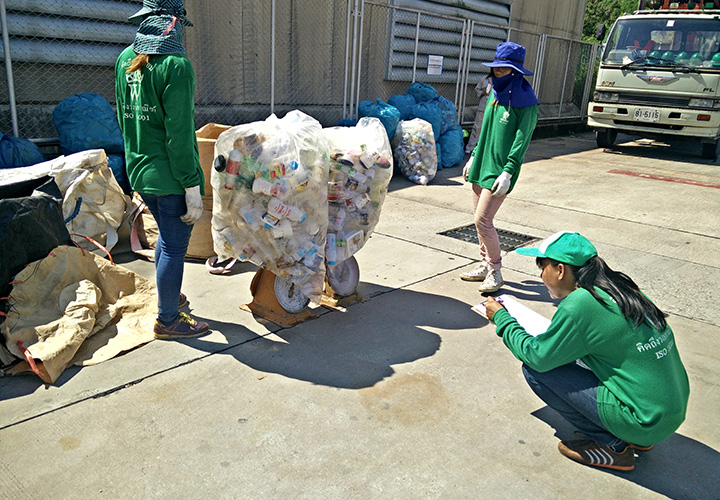Regional Review > Asia Pacific >
Operations
Energy Efficiency and GHG Emissions Reduction
Ford facilities in Asia have continued to reduce CO2 emissions in their manufacturing processes. Compared with 2015, they have reduced CO2 emissions per vehicle produced by almost 10 percent, and in the past seven years by nearly 40 percent.
As part of continuously improving energy efficiency across the region, one Changan Ford plant in Chongqing applied new 3-wet painting technology in 2016. The technology helps improve paint durability, enhance overall paint efficiency and reduce volatile organic compound emissions. In addition, this single project is estimated to help the plant reduce energy consumption by 10 million kilowatt hours per year – which is equivalent to the electricity consumption of 18,600 individuals in China over a year.
In 2016, Ford Asia Pacific used 15 percent less water to produce each vehicle compared to 2015 – a saving equivalent to two bathtubs of water for every vehicle made. Over the past seven years, we have halved our water usage per vehicle produced in the region, through a range of initiatives:
In India, our plants in Chennai have achieved zero liquid discharge and have also installed equipment to harvest rainwater to further reduce the use of drinking water. In 2016 alone, 3,000 cubic meters of rainwater was collected. At our Sanand facilities in India, we have invested in wastewater treatment and use 100 percent of this water for recycling and reuse within the property.
Read more about water conservation at our Sanand facility in India
In China, Ford reduced water use per vehicle produced by almost 50 percent compared with 2011, while local partner Changan Ford’s plants recycled and reused nearly 370,000 cubic meters of wastewater in 2016.
Over the past year in Thailand, Ford installed filters for cooling tower operations at the company’s joint venture Auto Alliance Thailand (AAT), which will save around 7,000 cubic meters of water per year. Ford Thailand Manufacturing increased its water efficiency by coordinating its fire hydrant testing schedule with its irrigation schedule, saving around 5,000 cubic meters of water per year.
In Vietnam, Ford is using green building and landscaping practices to reduce our water impact even further. A new natural stormwater management system saves more than 2,400 cubic meters of water per year.
For every car produced in Ford’s Asia Pacific region in 2016, there was over 90 percent less waste sent to landfills compared to 2011. Currently, 13 of our Asia Pacific manufacturing plants are zero waste to landfill (ZWTL) facilities.
In China, in 2016, Ford sent nearly 60 percent less waste per vehicle to landfills compared to 2015. Key plants in the Jiangling Motor Corporation and Changan Ford have all remained ZWTL facilities.
In India, all Ford plants have retained their ZWTL status.
Our plant in Vietnam was declared a ZWTL facility in 2016.

Thailand waste bank.
Case Study
Recycling Bank Project, Thailand
In Thailand, our joint venture Auto Alliance Thailand (AAT) achieved zero waste to landfills in 2016. This was helped by a recycling bank project targeting the segregation of 100 percent of waste, including improving recycling bins and engaging with employees. More than 8,000 people participated in this project, including employees from AAT and its local supplier. The project helped recycle a total of 80,000 kilograms of waste in 2016 and AAT sold the recycled materials through a local recycling bank committee.

